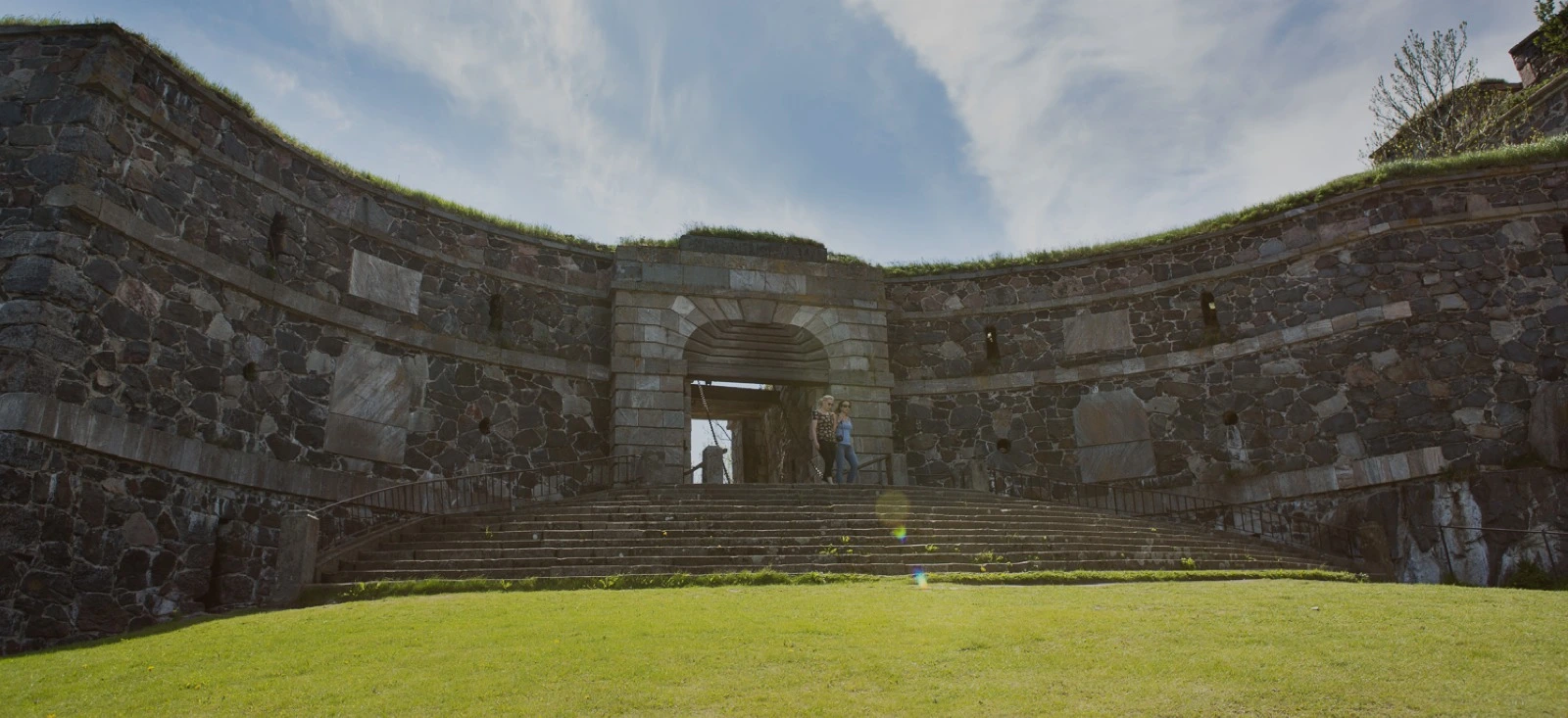
King's Gate


King's Gate
The King’s Gate was built in 1753–54 as the entrance gateway to the fortress. Facing the sea and equipped with a drawbridge, the King’s Gate used to serve as the defence of the fortress as well as a symbolic token of power, which was further emphasised by the wide stairs and quay that were built in 1775. The gate was built on the site where the ship carrying King Adolf Frederick of Sweden was anchored while he inspected the construction of the fortress in 1752. The location of the gate was selected already before the King’s visit.
The King’s Gate has two storeys. The facade of King’s Gate forms a crescent with a gateway framed with sandstone in the middle. The gate imitates a fortification as the gate is equipped with a drawbridge crossing the dry ditch in front and oval and round rifle loopholes. A quay and stairs, constructed from limestone excavated from a site near Stockholm, were built in front of the gate. The original quay was destroyed in the 1855 bombings of the Crimean War. The current, curved quay was completed in front of the gate in the 1990s in connection with the Kustaanmiekka shorework renovation.
The King’s Gate is adorned with memorial plaques which have carved texts mirroring the intellectual history of the 1770s. They convey political, strategic and moral guiding principles in life. Augustin Ehrensvärd, the founder of the fortress, had one of the ornamental marble slabs inscribed with a famous exhortation. Translated into English, the text reads “Posterity, stand here upon your ground and never rely on outside help.” Originally, the text was gilded.
